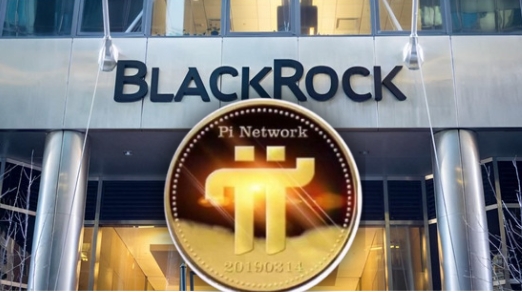Pi Network, a decentralized cryptocurrency project, has made significant strides in its journey toward full mainnet deployment. The team had previously set a key milestone: the transition to the Open Network would occur once 15 million users completed the Know-Your-Customer (KYC) process and successfully migrated to the mainnet before January 31. As of early this year, Pi Network reported “excellent progress,” with over 9 million users successfully migrating. Prior to this, the developers confirmed that 14 million users had cleared the KYC verification process.
However, despite these achievements, challenges remain. A section of users has faced KYC rejections, leading to concerns within the community. To address these issues, Pi Network has provided guidance on how affected users can rectify their applications, including options to update their details, appeal rejections, or seek assistance through official channels.
What is KYC?
KYC (Know-Your-Customer) is a verification process that ensures users’ identities are legitimate. This process is critical in cryptocurrency ecosystems to prevent fraudulent activities such as money laundering, identity theft, and bot-driven mass registration.
For Pi Network, KYC verification is essential because:
- It ensures fairness—only real human users can mine Pi, preventing automated bots from accumulating large amounts of tokens.
- It enhances security—verifying users helps prevent duplicate or fake accounts that could disrupt the network.
- It aligns with regulatory standards—many governments require cryptocurrencies to follow compliance measures to protect users and financial systems.
Progress in Pi Network’s Mainnet Migration
Pi Network has been working towards full decentralization, where users can freely transfer and utilize their Pi coins within an Open Network. The team outlined a two-phase mainnet launch:
Enclosed Mainnet (Grace Period):
- During this phase, users must complete their KYC process.
- Migrated users can access the Pi mainnet but within a closed environment, preventing external transactions.
The goal was to onboard at least 15 million verified users before transitioning to the Open Network.
Open Network (Full Decentralization):
Once the migration goal is reached, Pi Network will allow unrestricted transactions.
Users can interact with external blockchains and cryptocurrency exchanges.
According to Pi Network’s latest update:
- Over 14 million users have successfully passed KYC.
- Over 9 million users have migrated to the mainnet.
- The team continues to push for the remaining users to complete their KYC and migration before the final transition.
- Challenges in KYC Verification and User Complaints
Despite the progress, many users have encountered difficulties in completing KYC, with some facing outright rejections. Common reasons for KYC rejection include:
1. Name Mismatches
If the name submitted does not match official identification documents, the application may be rejected.
Users who changed their legal name, used nicknames, or had minor spelling errors in their registration details often face verification failures.
2. Poor-Quality Video Submissions for Liveness Checks
The KYC process involves a liveness check, requiring users to submit a short video to prove they are real people.
If the video is too dark, blurry, or does not meet the requirements, the system may reject it.
3. Multiple Accounts or Duplicate Submissions
Pi Network enforces a one-person, one-account policy to maintain fairness.
Users with multiple accounts or inconsistencies in their applications risk disqualification.
4. Expired or Unreadable Identification Documents
IDs that are expired, damaged, or not properly captured may lead to verification failure.
How Users Can Fix KYC Issues
To help affected users, Pi Network has outlined solutions:
1. Updating Personal Information
Users whose names do not match their IDs can spend a small amount of Pi to update their names within the app.
2. Submitting an Appeal
If a user believes their KYC rejection was an error, they can submit an appeal through the official Pi Network KYC portal.
Appeals allow users to resubmit their identification and liveness verification.
3. Seeking Help Through Official Channels
Pi Network has recommended that users seek assistance via official Telegram groups or the in-app support system.
By following these steps, affected users can increase their chances of passing KYC and migrating to the mainnet.
Best Practices for a Smooth Migration
To avoid complications and ensure successful verification, users should follow these best practices:
1. Ensure High-Quality Video Submissions
- Use a well-lit environment when recording liveness checks.
- Make sure the camera focuses properly to avoid blurriness.
2. Complete All Mainnet Checklist Steps
Users must complete every step of the Mainnet Checklist in the Pi Network app before migration.
3. Sign the Token Acknowledgment
Before transferring Pi to the mainnet, users must sign the token acknowledgment agreement, which confirms their understanding of Pi Network’s policies.
4. Regularly Check for Updates
Pi Network frequently releases updates regarding KYC and migration progress.
Users should stay informed through official announcements.
What’s Next for Pi Network?
Pi Network’s journey toward full decentralization is nearing completion. With over 9 million users migrated and 14 million verified, the transition to the Open Network is within reach. However, achieving the 15 million KYC-migrated user threshold remains crucial.
Once the Open Network launches:
- Users will be able to freely trade, transfer, and utilize Pi beyond the enclosed ecosystem.
- Pi Network’s blockchain will integrate with other platforms, allowing greater adoption.
- The true value of Pi will be determined by its utility in the marketplace and exchanges.
For now, the focus remains on helping more users complete KYC and migrate before the final transition.
Conclusion
Pi Network has made commendable progress toward launching its Open Network, with millions of users successfully verifying and migrating to the mainnet. However, challenges such as KYC rejections have slowed the process for some users. In case you’re mining BOTH Coins then use this REWARD CODE: 119070
By following Pi Network’s guidance—updating details, appealing rejections, and ensuring high-quality submissions—users can overcome these hurdles. Additionally, completing the Mainnet Checklist and signing the token acknowledgment are critical steps for a smooth transition.
As the deadline approaches, Pi Network users must act promptly to secure their place in the Open Network and unlock the full potential of their Pi holdings.

















Mine Pi for free on your phone! I am sending you 1π! To claim your Pi, follow link https://minepi.com/yajer72 use (yajer72), your invitation code.